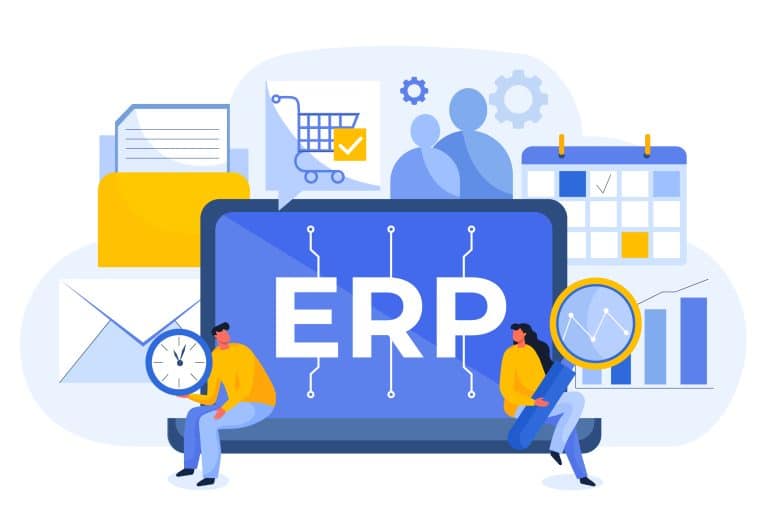Transitioning to NetSuite’s Inventory Management system offers Kiwi businesses the chance to streamline their inventory processes with real-time visibility and control. This guide will walk you through the data migration process, ensuring a smooth transition without the common pitfalls.
Understanding NetSuite’s Inventory Management
NetSuite’s Inventory Management System, a key component of the NetSuite ERP system, is tailored to optimise stock levels and improve cost efficiency for New Zealand businesses. It enables real-time inventory tracking, automated reordering, and demand planning. For additional insights into inventory management, you can read our blog: “What is Inventory Management?“.
The Steps to Implementing NetSuite Inventory Management
When you’re ready to upgrade your inventory management system to NetSuite, understanding the steps involved is crucial for a smooth transition. The process is a journey that involves several key stages, each with its own set of tasks, duration, and responsible parties.

Above is a flowchart that visually outlines the migration process. It’s a strategic roadmap that will guide you through the necessary steps to successfully migrate your data to NetSuite’s Inventory Management system. This visual representation should be used as a reference as you proceed through the detailed breakdown provided below.
- Data Audit: The first step is a thorough Data Audit. A Data Analyst will spend approximately one week reviewing and assessing the quality of your current data. This stage is essential for identifying any discrepancies or areas that may require attention before the migration begins.
- Data Cleansing: Following the audit, Data Cleansing takes place. Over 1-2 weeks, an IT Specialist works to ensure that your data is clean and conforms to NetSuite’s standards. This step is crucial for preventing errors during the subsequent migration phases.
- Data Mapping: Next, Data Mapping occurs. This two-week phase involves a Data Analyst aligning your data structure with NetSuite’s fields. Accurate mapping is critical for ensuring that data flows correctly into the new system without loss or corruption.
- Test Import: A Test Import is conducted within a week to validate the migration process. This crucial step, carried out by an IT Specialist, helps identify and rectify any issues, ensuring the actual migration can proceed smoothly.
- Full Migration: The most extensive phase is the Full Migration. Managed by a Project Manager, this step can take between 2-4 weeks and involves the complete transfer of all necessary data to NetSuite.
- Validation: The process concludes with validation. A Data Analyst takes about a week to verify the accuracy and integrity of the migrated data within NetSuite. This final check ensures that everything is in order and functioning as expected.
By following these structured steps, you can anticipate the resources and time commitment required for a successful transition to NetSuite’s Inventory Management system, setting your Kiwi business up for improved efficiency and decision-making capabilities.
Executing Your Migration
The execution phase is where planning meets action. It’s crucial to approach this step with diligence to prevent common pitfalls.
- Data Preparation: Begin with ensuring data accuracy and compatibility with NetSuite’s format.
- Utilising NetSuite’s Tools: Take advantage of NetSuite’s robust data import tools for a smooth transition.
- Monitoring and Troubleshooting: Keep a close watch on the migration process to quickly resolve any issues.
Training and Support
A critical component of a successful NetSuite Inventory Management implementation is ensuring that your Kiwi team is fully trained and supported throughout the transition. This involves understanding the changes in workflow and processes. To illustrate the improvements and changes that NetSuite will bring to your inventory management processes, the following table compares the typical tasks before and after the NetSuite implementation:
Process Comparison Before and After NetSuite Implementation
| Process | Before NetSuite | After NetSuite |
| Inventory Tracking | Manual entry, spreadsheets | Automated in NetSuite |
| Order Management | Separate systems | Integrated in NetSuite |
| Reporting | Manual compilation | Real-time in NetSuite |
This table serves as a guide for what your team can expect post-implementation. It highlights the shift from manual, often time-consuming tasks to a more streamlined, automated process using NetSuite. Training will focus on familiarising your team with the new system, ensuring that everyone is comfortable and proficient with the new workflows. Additionally, ongoing support will be crucial in addressing any questions or issues that arise as your team adapts to the new system.
By comparing the before and after scenarios, we can see the tangible benefits that NetSuite brings to the table, such as reducing manual data entry and providing real-time insights into inventory levels and order statuses. This not only improves efficiency but also enhances decision-making capabilities for New Zealand businesses.
Addressing Common Concerns
Migrating to a new system like NetSuite can raise concerns, but with the right information and support, these can be addressed effectively.
- Implementation Delays: Reference industry statistics, such as those from Anderson Frank’s report, to set realistic expectations and prepare accordingly.
- Skill Gaps: Highlight the importance of having the right skills in-house or the need to seek external expertise to ensure a smooth transition.
Conclusion
In summary, migrating to NetSuite’s Inventory Management system is a transformative step that streamlines your inventory processes, enhances data accuracy, and empowers your team with real-time insights for better decision-making. The journey involves meticulous planning, from data audits to validation, and requires a dedicated team to manage each step effectively.
As you approach the final stages of implementation, it’s essential to review your progress, ensure all team members are adept with the new system, and confirm that your operational goals are being met. Remember, the transition to NetSuite is not just about new software; it’s about optimising your business processes for maximum efficiency and growth. For more on why this optimisation is crucial, consider reading “Five key reasons you need better inventory management“.
Take the Next Step
Are you ready to take the leap into a more efficient and integrated inventory management solution? Visit Jcurve Solutions to explore how expert guidance can smooth your transition to NetSuite’s Inventory Management system. Our team is ready to assist you in every step of the migration process, ensuring a seamless and successful implementation. Start your journey today and unlock the full potential of your inventory management for your New Zealand business.










